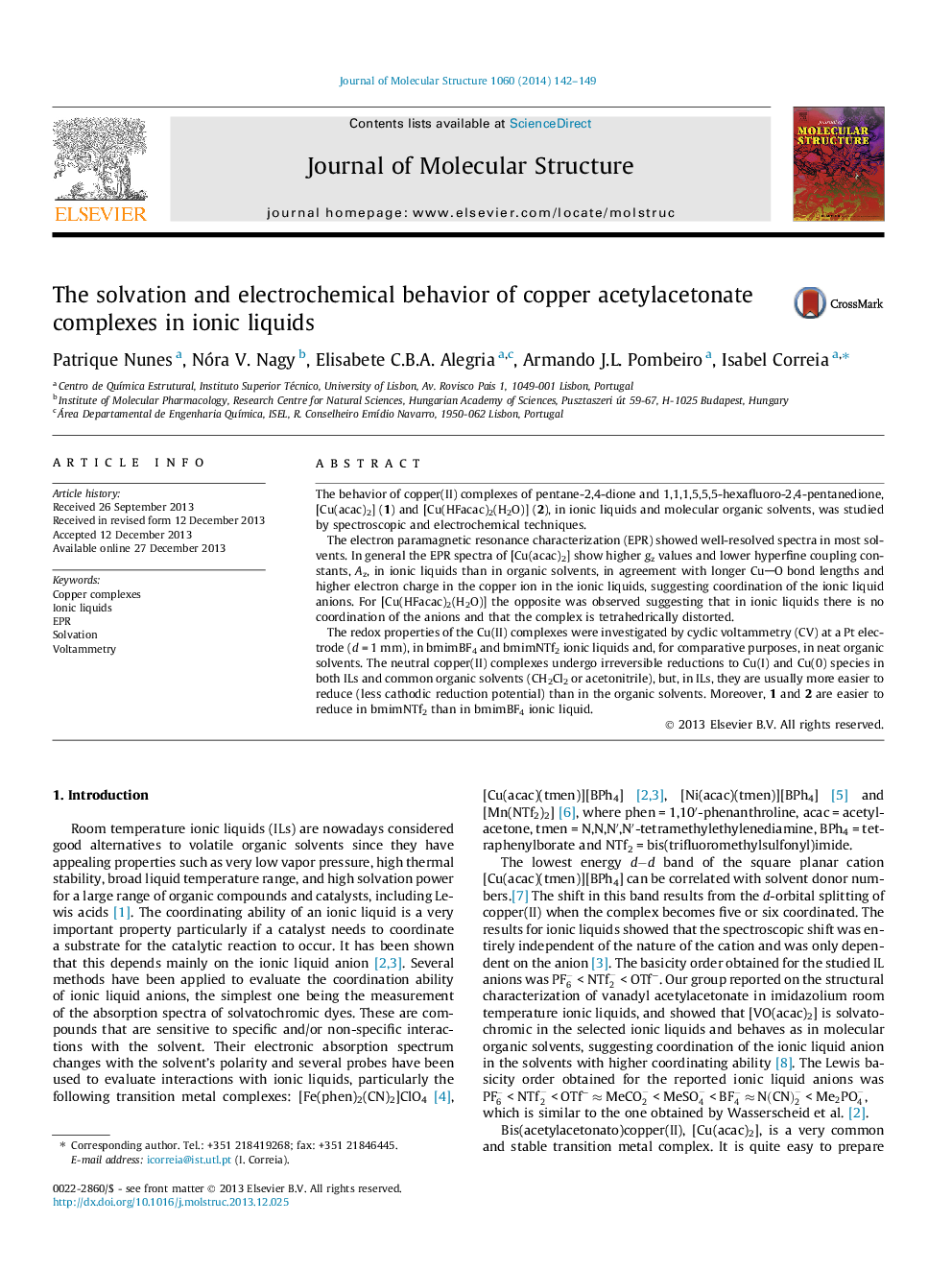| Article ID | Journal | Published Year | Pages | File Type |
|---|---|---|---|---|
| 1405631 | Journal of Molecular Structure | 2014 | 8 Pages |
•Cu(acac)2 and [Cu(HFacac)2] were studied in ionic liquids and organic solvents.•The EPR spectra suggest coordination of the IL anion in [Cu(acac)2].•The EPR spectra suggest tetrahedral distortion for [Cu(HFacac)2].•The complexes are easier to reduce in ILs than in the organic solvents.
The behavior of copper(II) complexes of pentane-2,4-dione and 1,1,1,5,5,5-hexafluoro-2,4-pentanedione, [Cu(acac)2] (1) and [Cu(HFacac)2(H2O)] (2), in ionic liquids and molecular organic solvents, was studied by spectroscopic and electrochemical techniques.The electron paramagnetic resonance characterization (EPR) showed well-resolved spectra in most solvents. In general the EPR spectra of [Cu(acac)2] show higher gz values and lower hyperfine coupling constants, Az, in ionic liquids than in organic solvents, in agreement with longer CuO bond lengths and higher electron charge in the copper ion in the ionic liquids, suggesting coordination of the ionic liquid anions. For [Cu(HFacac)2(H2O)] the opposite was observed suggesting that in ionic liquids there is no coordination of the anions and that the complex is tetrahedrically distorted.The redox properties of the Cu(II) complexes were investigated by cyclic voltammetry (CV) at a Pt electrode (d = 1 mm), in bmimBF4 and bmimNTf2 ionic liquids and, for comparative purposes, in neat organic solvents. The neutral copper(II) complexes undergo irreversible reductions to Cu(I) and Cu(0) species in both ILs and common organic solvents (CH2Cl2 or acetonitrile), but, in ILs, they are usually more easier to reduce (less cathodic reduction potential) than in the organic solvents. Moreover, 1 and 2 are easier to reduce in bmimNTf2 than in bmimBF4 ionic liquid.
